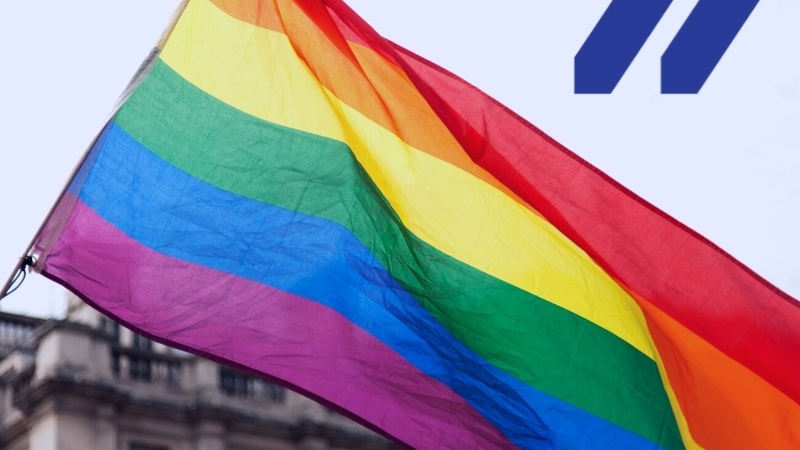
When I entered college, “gay,” was still a well-used, derogatory phrase in my peers’ vocabulary. Homework due next week? That’s gay. Pop quiz on the chapter we just read? Gay. No extra credit offered in this class? Gay. This is the learning environment that I was immersed in as a young person freshly out of high school and struggling to understand not only my sexuality, but my entire identity as a new adult in the world. I never saw anyone challenge the homophobic language I heard daily. I never saw a professor affirm that their classroom was a safe environment for all identities. I was never asked my pronouns nor offered anyone else’s.
It wasn’t until I left college that I found myself surrounded with people who made me feel safe enough to be my authentic, nonbinary, bisexual self. Befriending other people in the LGBTQ2S+ (lesbian, gay, bisexual, transgender, queer, two-spirit) community helped me see that folks like me could lead healthy, happy, fulfilling lives. Now, as a proud, public member of the LGBTQ2S+ community for a decade and a College Completion Corps coach through MCAN and AmeriCorps, I look at the environment of higher education and am excited to see the changes that have taken place since I first set foot on a college campus. That said, we still have a long way to go before we achieve full equity.
According to the 2021 AAU Climate Survey on Sexual Assault and Sexual Misconduct, 65.1% of undergraduate transgender, gender-queer, or nonbinary students reported experiencing harassing behavior since first enrolling in postsecondary education. Gallup Poll data shows us that in Michigan, only 13% of the LGBTQ2S+ community have a bachelor’s degree, compared to 16% of the non-LGBTQ2S+ community. The figures get bleaker when looking at post-grad degrees, where only 8% of LGBTQ2S+ members have obtained a post-grad degree, compared to 12% of non-LGBTQ2S+ members.
When we examine the goals we have of improving college access and persistence, the groups that are usually targeted are low-income students, first-generation college-going students, and students of color. Considering the data cited above, it is important to take an intersectional approach to college access and persistence. A Campus Pride report found that transgender and gender non-conforming students of color were more likely than cisgender students of color to experience harassment on college campuses. That same report found that a significantly larger percentage of transgender students of color reported experiencing harassment because of their gender identity than did white transgender students.
Especially during Pride month, a celebration that we now have thanks to the resistance efforts of transgender women of color, we cannot leave our LGBTQ2S+ students behind when we fight for equity on college campuses.
Here are three actionable things that you can do right now to help make yourself and your campus a safe and welcoming environment for LGBTQ2S+ students.
- Include your pronouns in your email signature. I sign my emails:
CJ Juntunen
she/they pronouns
This both signals my nonbinary identity to others without having to go through the emotional labor of coming out to every new person I meet and communicates to my students that I understand and acknowledge the importance of pronouns as identifiers of identity. - Ask people for their preferred name. When I meet with a student for the first time, I like to begin by saying, “Hi, I’m CJ! What do you go by?”, which allows them a chance to give me their preferred name without having to out themselves if they’re uncomfortable. I know from experience that a legal name can be difficult and expensive to change, but it can also be very painful to constantly be called by a name that does not reflect your identity.
- Educate yourself on gender identities outside of the traditional Western binary understanding of gender. PBS has an interactive map where you can explore the terms used for gender identities by many cultures, including the Two-Spirit identity used by Native and Indigenous Americans.
These small steps can make a huge difference in validating the identities of LGBTQ2S+ students. Happy Pride Month!
CJ Juntunen, a coach in our College Completion Corps program, reflects on their college experience and how we can continue to make college a more inclusive space.